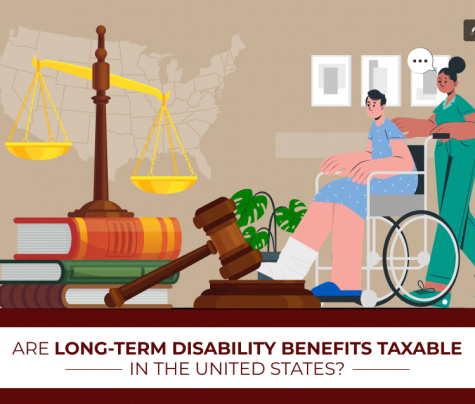
If you have come across an injury due to an accident, provided it was someone else’s fault, you can file for a personal injury case. However, you might also wonder how the personal injury case will go on.
This is because, in some cases, the personal injury case timeline can be longer than usual. Hence, it can get unsettling and frustrating for you, especially if you are the victim of an accident.
In this article, you will learn about the timeline of a personal injury case and the factors on which it depends. Furthermore, you will also learn what to expect if you are filing for a personal injury case. However, before that, you will also learn about some essential details about cases of personal injury. Therefore, to learn more, read on to the end of the article.
What to Expect in a Personal Injury Case?

In general, in case of a personal injury, the timeline of your claim will depend on the circumstances that you are in at present. However, you must also expect to experience new stages as your claim progresses.
Furthermore, personal injury cases are settled before someone files a lawsuit in court. Hence, if your case is settled, you will not have to worry about the stages discussed in this article. However, you must also keep in mind that a settlement can also take place at any point during the timeline of a personal injury claim.
Factors that Affect Personal Injury Case Timeline
The following are the major factors that affect your personal injury case timeline:
1. The Incident and the Immediate Aftermath
One can file a personal injury case for a wide variety of accidents. However, mostly, it occurs in incidents when one person becomes the victim of another person’s negligence. No matter what the incident is, you must take the necessary steps to protect your claim.
For example, if you face a car accident, you must take pictures of the marks of the vehicle, position, and any other aspect that shows the nature of the crash. Moreover, you must also show evidence of who might have been at fault. Additionally, you must also get copies of the police report and the names of witnesses.
However, if you are facing a big injury or pain, make sure to get medical treatment from a doctor.
2. Initial Consultation With an Attorney
After you address your immediate injury with the help of a doctor, make sure you discuss the matter with a personal injury attorney. You must do this if someone else is legally responsible for your accident.
Here, if your personal injury case is small, you can handle the claim yourself. However, it can only work if you are comfortable with the processes of the case and confident to get a fair judgment.
On the other hand, if you have faced a significant injury, you will surely need a lawyer for your personal injury claim. This also holds true if your medical bills and other losses amount to more than a few thousand dollars.
However, in all cases, make sure you are availing of the services of an experienced personal injury lawyer or attorney.
3. Investigation and Filing of the Claim
When it comes to personal injury cases, your lawyer will first interview you and find out everything about the accident. Apart from that, the lawyer will also learn about your injuries and medical treatment. Here, all you need to make sure is answer all your questions correctly and completely.
Further, you will also need to provide all your medical records, bills, and records of treatment. In addition to that, your lawyer will also assess the nature and complexity of the case and evaluate the strengths and weaknesses of your position. This will enable your lawyer to decide what steps to take further and what investigations to perform.
Afterwards, the lawyer performs a thorough investigation. On the basis of the investigation, the lawyer will send a demand letter to the accused party. After reaching of a satisfactory settlement, the lawyer might file a complaint with the court. This is where the litigation process starts.
4. Discovery Phase
This is a critical phase in litigation. Here, both sides of the case gather and exchange information. Here, both sides interrogate each other with the help of the court. Additionally, this phase also consists of depositions and sharing of documents related to the case.
5. Pre-Trial Motions and Settlement Negotiations
In this stage, both parties may choose to file pre-trial motions so as to resolve the problem before trial. Here, the phase might include motions where the court might consider dismissing a part of the case or ordering a party to provide more information. As a matter of consequence, both parties proceed with settlement negotiations to resolve the case.
6. Trial Preparation
If settlement negotiations for the personal injury are unsuccessful, the case again proceeds to trial. Again, both parties have to finalize arguments, arrange witnesses, and gather exhibits. Here, your attorney will develop a trial strategy with which to work.
7. Trial
Here, both sides present their case of the personal injury claim before the court. Here, both sides present their arguments, evidence, and cross-question witnesses. The focus is to make their own cases for damages and liability. Afterwards, the judge(s) deliberates the case and reaches a conclusion.
8. Post-Trial Motions and Appeals
After the trial for the personal injury case, any one of the parties may file for the post-trail motion. Here, the party can either apply for a new trial motion or ask for alteration in the judgment. In this case, if the losing party is not content with the judgment, they may apply to a higher court. This will extend the case timeline.
Bottom Line
Hence, you can see that the personal injury case timeline depends on the nature and depth of the case. However, getting a good understanding of the timeline can help you deal with and manage expectations. Thereby, you can prepare yourself for the processes of each stage.
Do you have any suggestions on what one must do in case of personal injury claims? Consider sharing your ideas and opinions in the comments section below.
Additional Reading:
- How A Personal Injury Lawsuit Can Change Your Life?
- What are the Roles and Responsibilities of a Personal Injury Lawyer?
- Expert Legal Strategies From a Redwood City Personal Injury Lawyer For Your Case










0 Reply
No comments yet.